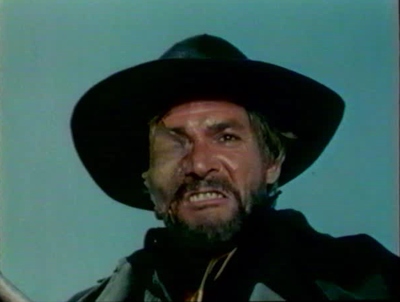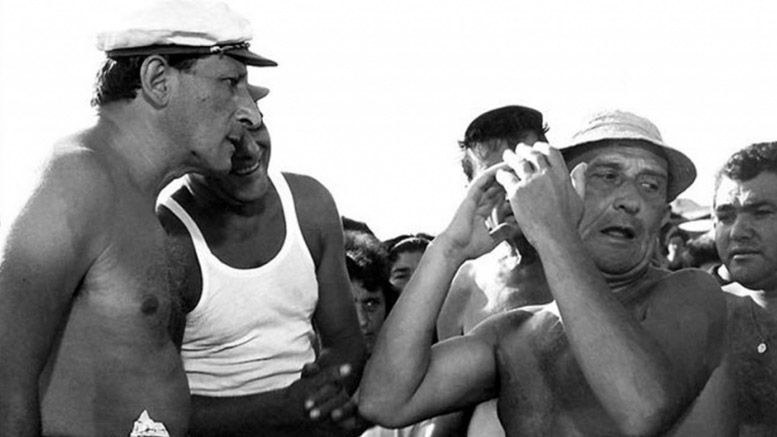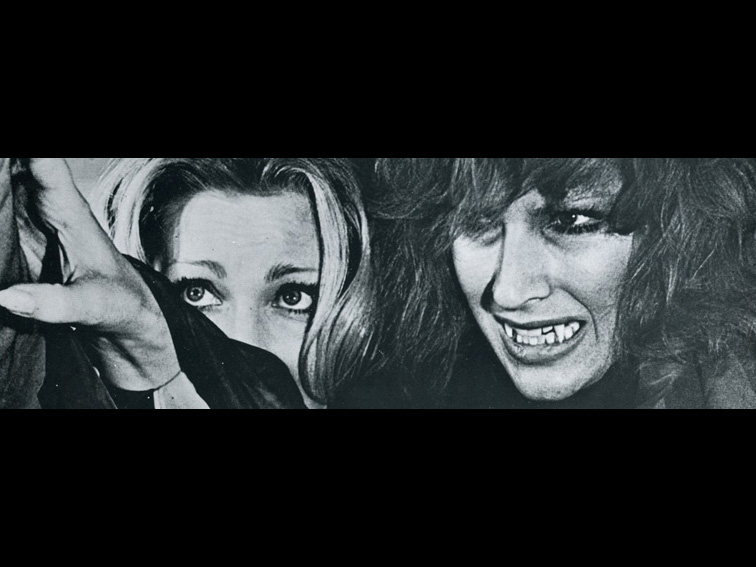Taking a bit of a break from 1950s movies this week, so here’s a review of a, erm, classic from the 80s.
If the group of Italian westerns made in the mid 1970s are generally referred to as ‘crepuscular’ or ‘twilight’ genre entries, then the tiny number made in the 1980s can only really be called ‘the after everyone’s gone to bed and turned the lights off’ westerns. Certainly, they hardly set the box office alight, with the likes of Tex and the Lords of the Deep bombing spectacularly. White Apache, on the other hand, was one of two back-to-back westerns shot by Bruno Mattei and Claudio Fragasso which, like its partner piece, Scalps, at least found some moderate success on video; or at least in accordance with its limited ambitions at any rate.
Based on a screenplay by Franco Prosperi – who had made some good films in the 60s and 70s – and Spanish co-producer José Mariá Cunillés, the story begins with a wagon train being ambushed by some scuzzy banditos. The only survivor is a pregnant young woman who lives just long enough to be rescued by a tribe of Apaches, before dying during childbirth. Her son, Shining Sky, is adopted by the chieftain, White Bear (Jose Cannalejas), and grows up to become a fine, astonishingly blonde, young man (Sebastian Harrison), not to mention a firm friend of his adoptive brother, Black Wolf. The two of them, though, fall out over a girl, Rising Sun (Lola Forner), and during an ensuing fight Black Wolf is accidentally killed. Although convinced of his adoptive son’s innocence, White Bear is unable to prevent him being sent into exile by the rest of the tribe.
Before long, Shining Sky ends up in an archetypal western town where, thanks to his skill as a horseman, he manages to get a job with a local rancher, Cribbens (Luciano Pigozzi). Unfortunately, he manages to get on the wrong side of a local thug, Ryder (Charly Bravo), a scalp hunter with shady connections, and he’s soon on the receiving end of a particularly vicious beating. He only survives thanks to the ministrations of Isabella (Cinzia De Ponti), a pretty but spoilt local girl, and has soon recovered just about enough to show his appreciation by giving her a good seeing to.
In the meantime, and with the compliance of the deeply racist Governor (Alberto Farnese) – who just happens to be Isabella’s father – Ryder has instigated a massacre. All of the Indians in the territory are brutally murdered, and Shining Star, when he discovers that White Bear is among the victims, swears to protect his people. He manages to save some of his tribe, including Rising Sun, and the two of them make their escape, but the Governor and Ryder are determined to find and make an example of him.

White Apache seems to have taken its cues from the most successful of the twilight westerns, Keoma, which had features an Indian half-breed living in white society and coming face to face with a mixture of racism and rampant capitalism. This reverses the story, by having a young white man growing up as an Indian, before encountering… racism and rampant capitalism. Stylistically, too, it seems to be striving for some of the mystical poeticism that made Keoma such a fascinating film: it has a similar narration, is peppered with the same kind of nonsensical philosophising, features an ageing Indian as a kind of Greek Chorus figure and preaches a kind of cultural tolerance (while showing a succession of people being tortured, shot and having tomahawks buried in their heads).
Neither Mattei or Fragasso, though, are Enzo Castellari, and while not as terrible as some of their work, this falls way short of the standard set by the likes of Keoma, A Man Called Blade and California. It’s made with a kind of bluntness that characterised much of Italian filmmaking of its time, and features some absolutely terrible dubbing, variable performances and shoddy production values. But, although it’s certainly not a good film, it does end up being kind of affecting, and once the romantic interludes are out of the way and it starts revelling in its own misanthropy it becomes kind of engrossing. As far as the genre goes, in other words, it’s a lesser work, but as an example of late 1980s exploitation it stands up pretty well.
According to Sebastian Harrison in Gods in Spandex, the majority of the film was directed by Claudio Fragasso: “Bruno Mattei only shot one day on White Apache, as he was busy shooting Scalps. The scene he shot is when I get my arms broken by Charley Bravo’s character. I remember how meticulous he was with the camera angles as well as the lighting and how, naturally, it took twice as long to set up shots. You could tell Bruno knew what he was doing, as he didn’t choose the same boring and safe set ups as Claudio.” Over time, Fragasso actually developed into the far more interesting filmmaker and had some success in the action genre, so maybe he can take some of the credit for this working as well as it actually does.


White Apache and Scalps seemed to take stories or plots that had been filmed before and try and add more violence and extremely evil villains to the tales in order to revive the genre. By this time the genre had the reputation of being very violent, pale by todays standards. White Apache is a combination of Romeo and Juliet and Shanghai Joe (love story and outcast trying to fit into society).